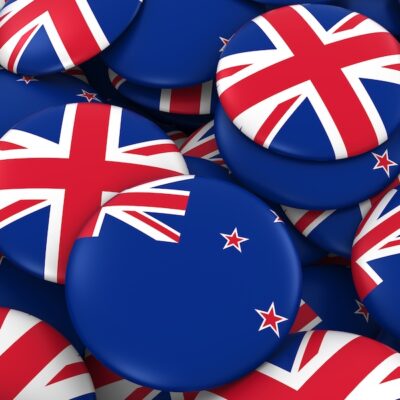Getting export-ready for China
Johnathan Chen explains the 2017 China marketplace – a potential minefield for Kiwi…
Johnathan Chen explains the 2017 China marketplace – a potential minefield for Kiwi exporters who go in unprepared.
Not surprisingly, Kiwi businesses in growing numbers are eyeing up China as an export market.
The scale of the potential business and consumer trade is mouth-watering, and our Free Trade Agreement and the good work of our politicians have paved the way.
But it’s no cakewalk trading with China. It is complex and its business character is different to other markets we’re accustomed to, and as a consequence many budding Kiwi exporters have come to grief there.
The biggest pitfall is to assume the business jurisdictions are similar. The same successful business strategy in New Zealand is sure to work well in China, or the US, or Europe, or even Australia. Yeah Right!
China has some interesting marketing channels that Kiwis need to understand.
There are the traditional trade channels, exporting products to supply to local retail stores and supermarkets for example. But there are restrictions on a variety of goods that make trade through these traditional channels difficult; health supplement products for instance require a “blue cap” registration before they can be sold in retail stores.
Amazon-style channels like Alibaba’s Tmall, JD.com and the like are becoming familiar online conduits, but there’s also the rise of ‘Daigou’ whereby traders buy goods outside China on behalf of (“daigou”) Chinese consumers. These traders may or may not be resident in New Zealand; they buy the items individually and send to the consumer. Or they buy in bulk – in which case the goods get repackaged (in Hong Kong for example) and are then on-forwarded to buyers.
For small-to-medium-sized businesses that have neither a presence in China nor the marketing resources to get goods there, it’s not a bad option. Word-of-mouth and social media virality can stir a feeding frenzy for your goods which is great.
But Daigou brings risks: you sell your goods to your buyer in New Zealand and bank the cheques; but meantime, your goods may be circulating in China and attracting the attention of unscrupulous opportunists. You have to own and control your brand, and that’s not just a matter of trade mark protection, it’s also means being vigilant about what your Chinese consumers are saying about your goods and your brand.
Exporters also need to understand and know how to work with the relatively recent phenomenon of cross-border bonded warehouses, which arose in free-trade zones set up in 2015 in mainland China and replicated the role played by Hong Kong. This was a welcome liberalisation of trade restrictions, reducing the cost of getting goods to Chinese consumers. But in 2016 the rules around this form of trade were changed – lists of allowed and prohibited goods were prepared and for many suppliers trade halted while that exercise was completed. For those who exclusively used this channel, the effect was crippling. The regulation has since been deferred but it’s a classic example of the capricious nature of the regulatory system in China.
“You need to carefully assess which channels will strategically work for you, for your specific products or services, and adopt appropriate strategies.”
The learning is clear: you need to carefully assess which channels will strategically work for you, for your specific products or services, and adopt appropriate strategies. You have to understand your market – how your potential consumers are buying similar products, who your competition is and how they trade in that environment, and what the price points are. You must also understand what your point of difference is, and how that can be marketed, while protecting it at the same time.
Secure your IP
It goes without saying you must secure your brand and intellectual property (IP) in China early. Time and again companies have gone into China to sell their goods assuming their IP protection is adequate for the occasion. Registering the brand in New Zealand doesn’t mean you own it in China, where trade mark “trolls” may misappropriate and register any locally used unregistered brands. One important jurisdictional difference is that in New Zealand “first use” establishes priority to a trade mark, whereas under Chinese law, the first person to register the trade mark is entitled to ownership of it.
This is a serious issue which plagues not only Kiwi exporters, but also some of the biggest and most famous Western brands. Brands like New Balance, Hermes, Jordan and even Lexus have all lost trade mark rights, or have had to write out big cheques because of this difference in trade mark law.
Diligence and documentation
After you have completed your research and worked out your strategy (and decided that China is still a market for you), you must carefully build relationships with those you are working with in China. Do your due diligence, and have open and frank conversations with potential partners around what those relationships will look like.
And document it all. A common observation that gets bandied about is: Don’t use contracts, because when a problem arises they’re unenforceable in China. There is some truth in the statement that it’s difficult to get monetary recompense around a contractual issue in China. But the problem again is in the divergence of understanding between the two business cultures, in this case about what a contract means.
Kiwis see a contract as a document to be followed rigidly once it’s signed. The Chinese see it as a first step in securing the relationship and trust between the two parties, providing a business platform from which business negotiations will continue. The contract is not the end of things – and circumstances change quickly in China.
The contract can still be a useful document in setting down what both parties will do within the relationship and what they want out of it. It can capture, for example, the important IP ownership considerations around what happens if a distributor takes your trade mark without your consent. At the end of the day, both parties are trying to make money. Understand that the contract for your Chinese partners is about how you can help each other do that; so work with them rather than be offended by the cultural differences in their understanding of “contracts”.
The cross-border bonded warehouse change mentioned earlier is typical of the changeable nature of the Chinese economy. Regulations can be amended, withdrawn, or new ones introduced quite suddenly – with little notice. You need to monitor that environment constantly, and in that we have willing allies in NZ Trade & Enterprise, the Ministry of Foreign Affairs and Trade, the Ministry of Primary Industries and Export NZ, along with the likes of the NZ China Trade Association and industry-specific organisations like Natural Products New Zealand.
The recurring theme here (as you may have gathered) is to be diligent – do your homework and prepare well for your China foray (IP, documentation, market and channel knowledge), and be vigilant – monitor your market and the broader Chinese economy.
The rewards of getting it right are definitely worth the venture.
Johnathan Chen heads the Asia Division of James & Wells, a nationwide law firm which specialises in all aspects of Intellectual Property.






